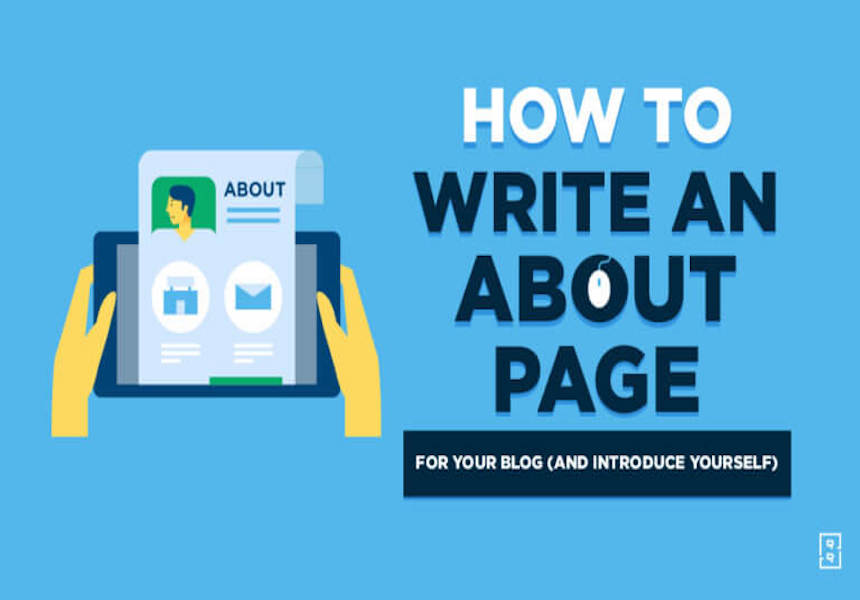How to Write a Brief and Powerful Bio
Did you know that the "about me" page is one of the most-visited pages on most solopreneur websites?
It's one of the most important aspects of your portfolio, website, or blog. It's where prospective employers, clients, website visitors, and other professional and personal connections can learn more about who you are and what you do. It's also an excellent resource for promoting your professional brand.
Many professional connections are made through websites or social media platforms, and the "About Me" blurb allows you to provide your pitch online. If you use any web-based resources, you should consider writing an "About Me" section that will enable readers to learn more about you. This article defines an "About Me," and explains how to write one.
What is an About Me Page?
An "About Me" section, also known as a blurb, is a brief piece of writing that informs your reader about your professional background, key accomplishments, personal values, and any brands with which you are affiliated. "About Me" sections are standard on personal websites, social media profiles, and company directories. A blurb is an opportunity to quickly provide important information about yourself to potential business contacts such as clients, vendors, employers, or anyone else who wants to learn more about you.
The length, tone, content, and point of view of "About Me" writings can all vary. A social media blurb, for example, might be shorter, more casual, and written in first-person "I" statements. Blurbs for a company website may include more information, a professional tone, and your full name. You do, however, have a lot of leeway in terms of the length and style of your "About Me."
Blurbs are essential because they provide potential business contacts with the most pertinent information about you in a short period. Because an "About Me" section is less formal than a candidate profile on a resume. It is also an opportunity to use humor or a personal story to help the reader become acquainted with you.
What Do You Include in an About Me Page?
Writing an About Me page or section for yourself is never accessible. The good news is that if you follow the formula and tips below, you should be able to generate an engaging 'About Me' statement without too much difficulty. Here's how to create an "About Me" page you'll be proud of.
Your 'About Me page should include the following information:
- What you are and what you do
- How did you get there?
- Where do you want to go next?
You should use it to describe your credentials, expertise, and goals. What is the best way to get started? The exercises below can help you figure out everything and determine what to include based on your target audience.
It can be challenging to choose the right information to represent yourself in a short amount of time. Consider including the following essential elements in your "About Me" section:
- Current employer, job title, and duties
- Personal ideals
- Professional and academic achievements: Listing your previous accomplishments demonstrates that you take pride in your work.
- A personal account: Incorporating an anecdote into your blurb can increase your reader's interest in you.
- Goals: Informing readers with similar goals about what you hope to achieve may entice them to collaborate with you.
- Readers can learn more about you by visiting the following websites: Including links to your social media, blogs, or other websites allows you to provide more information about yourself.
3 Tips To Write an Effective "About Me" Page
Pick the right format;
Choose whether to use the first or third person. What's the difference between using the first or third person, and why does it matter? The first person uses "I" statements, such as "I manage teams...", whereas the third person (as shown above) uses "he/him" or "she/her" statements, such as "She manages teams..." 'About Me' statements are written in both ways.
The most important thing is to pick one and stick with it, rather than alternating between the two:
- When writing the 'About' section of a business website, it's best to use the third person ("She supervises ...").
- If your website is a personal portfolio or blog, you should write in the first person ("I have ten years of experience ...").
Organize your thoughts.
Before writing, organize your main points to ensure your blurb is clear and concise. Consider scheduling your "About Me" section in chronological order or by topic to keep your message simple. You could, for example, write a standard biography or individual paragraphs about your professional accomplishments, personal values, and future goals.
Be unique.
Your "About Me" section is a great way to distinguish yourself in the professional world. Many people may have had similar experiences to yours, but how you write your blurb can highlight your unique qualities and experiences.
Writing separate "About Me" sections for different outlets is another unique aspect. Because a professional website differs from a social media page or a personal website, writing a separate entry for each platform is best. Writing a unique "About Me" for each occasion will highlight your creativity and make you memorable to your reader. And boast of your strengths.
Finally, Update Your Page Regularly
Remember that your "About Me" page is a work in progress. You can (and should) come back and update the page whenever inspiration strikes to ensure it accurately reflects where you are in work and life.









